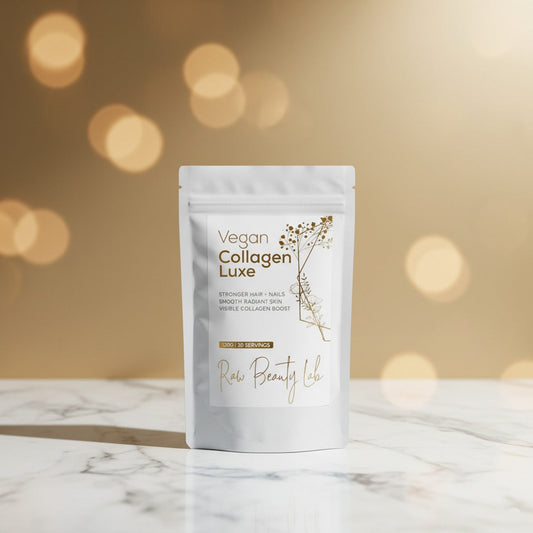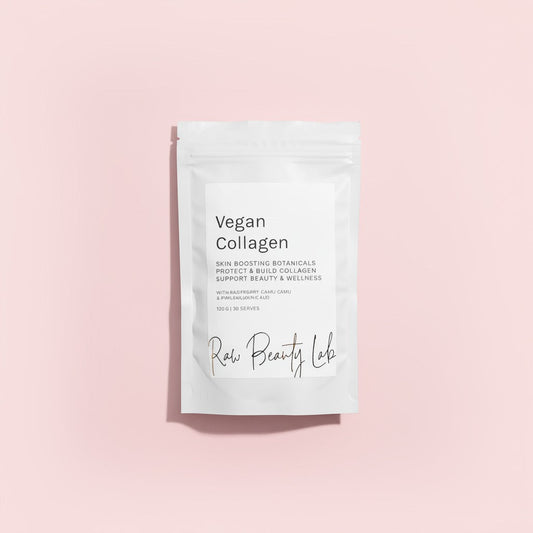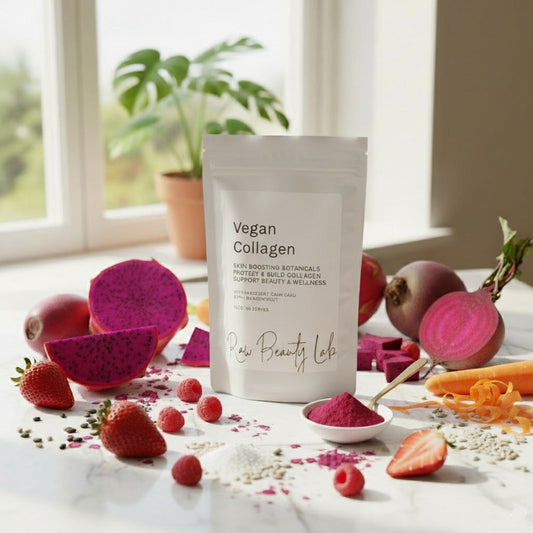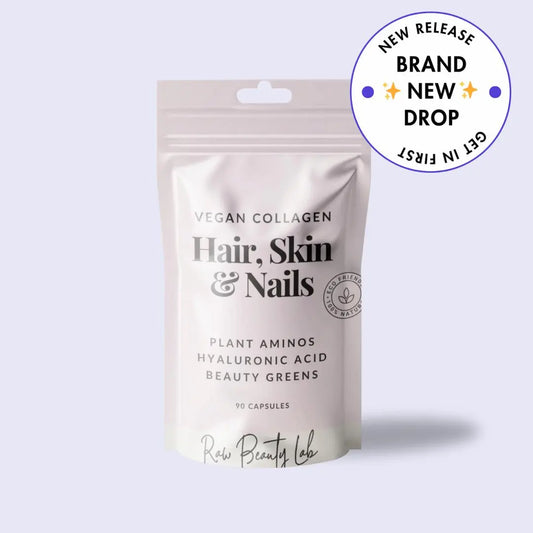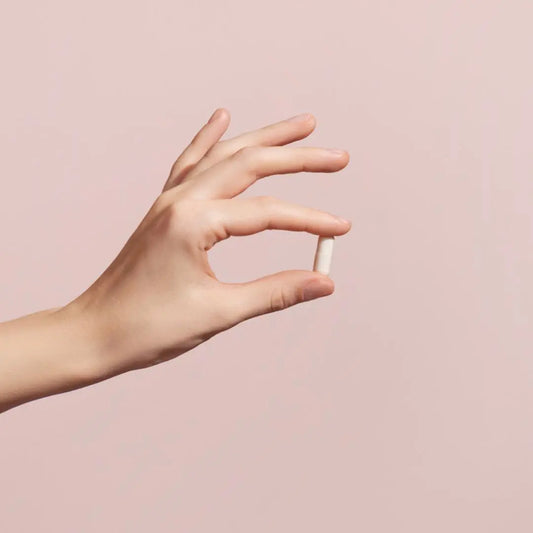Table of contents
With quarantine, everything from eating, training, working and even socialising has been happening within the walls of our home. The trick to staying sane while we remain locked in indoors is to break routines and try something new. But between zoom meetings, losing our minds to boredom, and solidarity, we productive few have decided to take our skin and body health in our own hands by overhauling our diets at their core.
How pesticides can age your skin
Loading your diets with luscious good-for-you veggies was never a bad thing – but with today’s food industry leaning more and more towards mass production, the use of pesticides is becoming increasingly prevalent. So, what’s the big deal might I hear you ask? Pesticides have been associated with a number of health issues, namely asthma, Parkinson’s disease, cancers such as lymphomas and leukaemia, anxiety and even insomnia. A lack of sleep can severely affect collagen production and the skin’s ability to repair itself – a definite no-no in the Raw Beauty Lab community.
However, pesticides (specifically endosulphan and endrin), also disrupt oestrogen function, the hormone partly responsible for controlling the growth and plumpness of new skin cells. Reduced oestrogen function was found to cause thinner, drier skin and promote the earlier onset of wrinkles and fine lines.
Start your own veggie patch
The easier approach to our pesticide problem can be solved by shopping organically – but like the term ‘natural’, the produce passed as ‘organic’ might not be as pure as you think. Thankfully, we have a way you can bypass pesticides completely and spend your time at home with this fun and productive, (not to mention child-friendly) project! Starting your own veggie patch can help ensure you are feeding your body with wholesome, pesticide free ingredients, enable you to kick-start your own compost and even save you a couple of quid on your next stop - here's a complete beginner's guide on the best way to help you grow your own vegetable patch!
The Best Anti-Ageing Vegetables for Your Veggie Patch
With a vast range of vegetables available, it can be overwhelming to choose which vegetable you want to plant. We’ve chosen some of our top picks based on ease, maintenance and of course, their free radical fighting capabilities!
Spring Onions
A great to add to any dish, spring onions are a rich source of ellagic acid, a powerful antioxidant that reduces skin sensitivity to the sun. Not only does this protect collagen degradation, it also helps reduce inflammation and helps to thicken the outer layer of your skin, reducing trans epidermal water loss.
Plant this phytonutrient powerhouse in pots or your back garden between March and July, and harvest after just 2 months. Let the buds flower, they’ll self-seed, and if you plant them with mint, you’ll prevent onion flies (who said natural pesticides didn’t exist?).
Tomatoes
A staple for soups and spaghetti sauce, tomatoes are incredibly easy to plant and maintain, not to mention they are packed full of lycopene – an antioxidant you’ll be grateful that exists after spending a day out in the sun! Lycopene is great at reducing skin sensitivity to the sun and helps to prevent skin burning upon UV exposure. It also is responsible for helping your keratinocytes (skin cells) sit flatter on your face, making your skin feel smoother and giving it a natural glow!
Decorate your kitchen windows by planting Romello bush tomatoes in hanging baskets or window boxes between February and April. They’re unbelievably low maintenance and you’ll have plump juicy tomatoes ready to eat in a few weeks!

Beetroot
Beets make refreshing additions to a salad and can also be paired with chocolate to make healthy brownies (believe me, I was shocked too!). Beetroot is a rich source of vitamin c – the precursor that helps build the soul of your skin – collagen as well as antioxidants rutin, epicatechin and caffeic acid that help protect against collagen degradation. Beetroot also has antibacterial properties making it useful to those fighting acne!
Plant the seeds into moist soil about 5-10cm apart in a large deep tray between March and July, and you’ll have succulent beets in a couple of months! For increased aesthetics, try out the chioggia beetroot variety known for its mild earthy flavour, orange-pink skin and distinctive bullseye appearance when sliced!
Garlic
Commonly used as a medicinal herb, garlic has many features that would favour its prevalence in our diets. Rich in the antioxidant allicin, garlic is great at fighting free radicals in the skin. It also helps increase the production of nitric oxide, a compound responsible for causing blood vessel relaxation and increasing circulation, removing free radicals and other toxic waste products from the skin faster.
Grow this pungent herb in spring into a pot of well-drained soil. Other than watering when it's dry, leave the cloves to work their magic. You’ll know they’re ready to lift when their leaves begin to turn yellow and begin to die back. Dry them in the sun and store in your pantry – simple!

Radish
Added to salads to give them an extra crunch, radishes provide a generous dose of vitamin c to fight oxidative stress and help improve collagen production. Minerals like calcium are also present in radish, which is required to help control sebum production in the epidermis to help keep your skin hydrated.
Plant the peppery delicacies in pots during late summer and the quick growing veggie should be ready to harvest after a month. Enthral the little ones with the rainbow mixed variety as they sprout vibrant roots of purple, gold, red and white!
How to ensure your success…
Definitely not on the mandatory pile but useful is to use a 50:50 mix of multipurpose and John Innes No3 to give your buds the nutrients they need to sprout. Another tip to help your kitchen garden blossom, windowsill propagators and heats mats can really help provide the warm humid conditions that are ideal for the plants to prosper. Be sure to consider storage when purchasing, although smaller propagators and heat mats can be quite easily rolled up!
I hope I’ve inspired (if not entertained), your will to grow your own veggie patch. It’s easier than you think and with practice you’ll become a gardening whizz! Not to mention, the health benefits would be great for skin and your health! Tag us on our socials @rawbeautylab to show us which lucky veggies made it onto your patch and whatever you do, don’t forget to water your patch!

